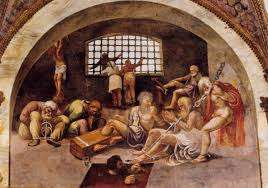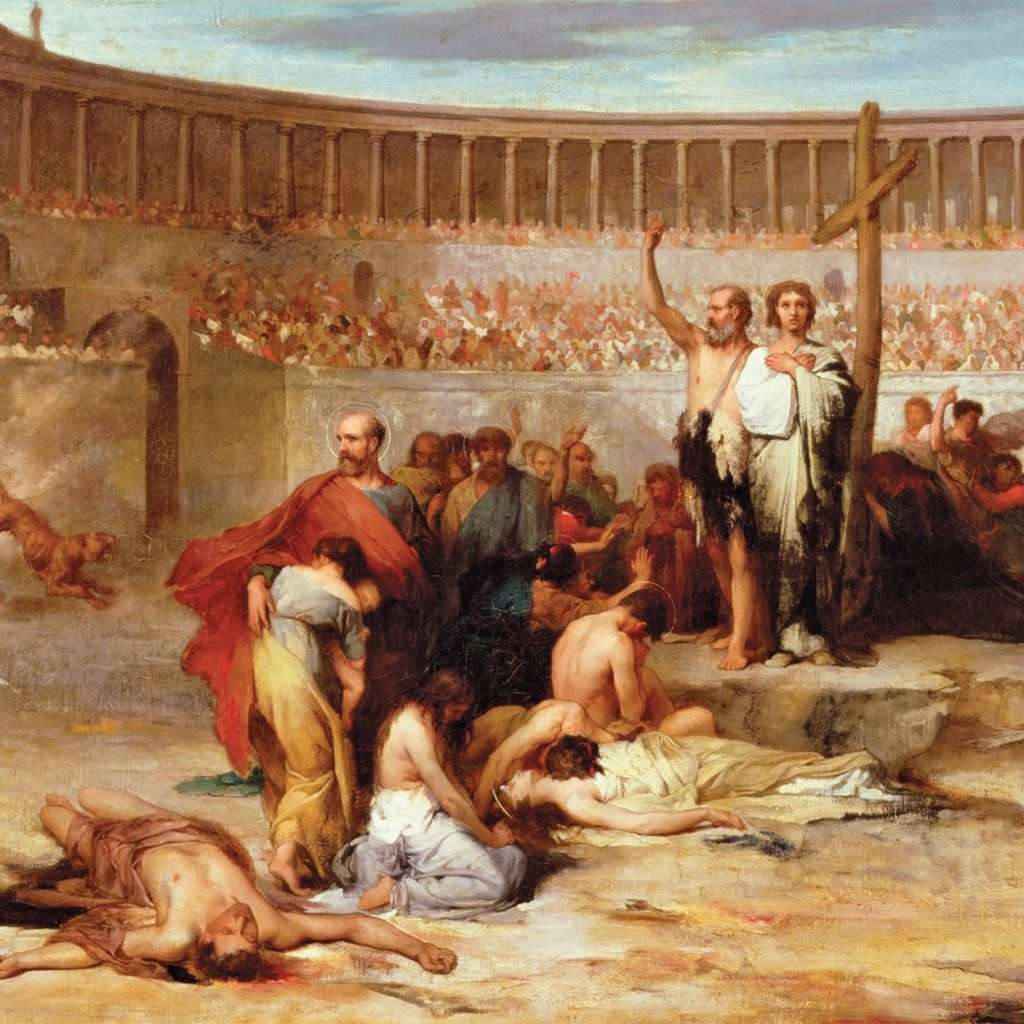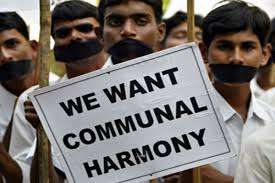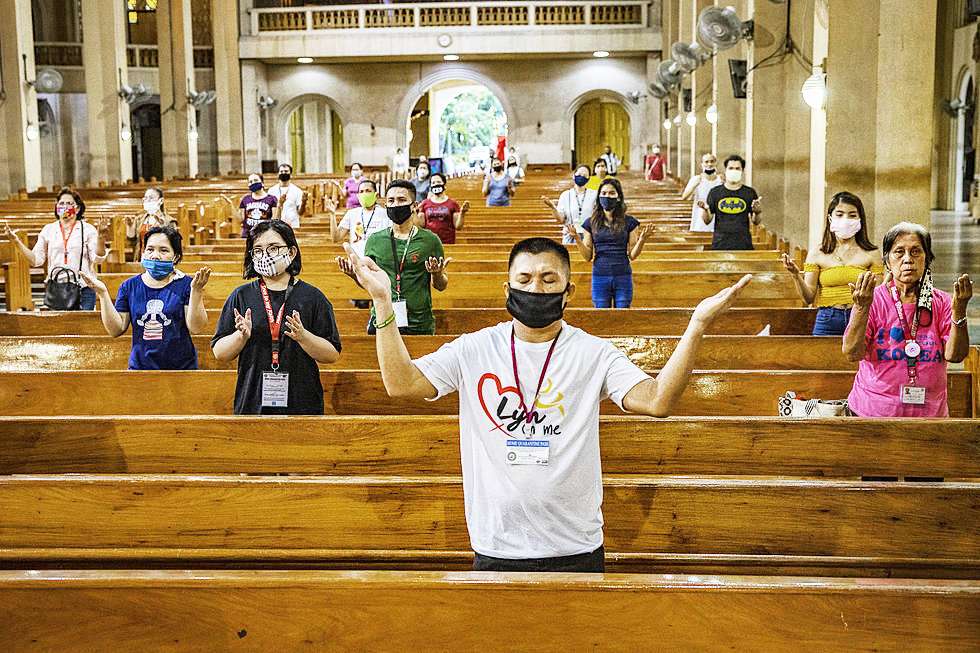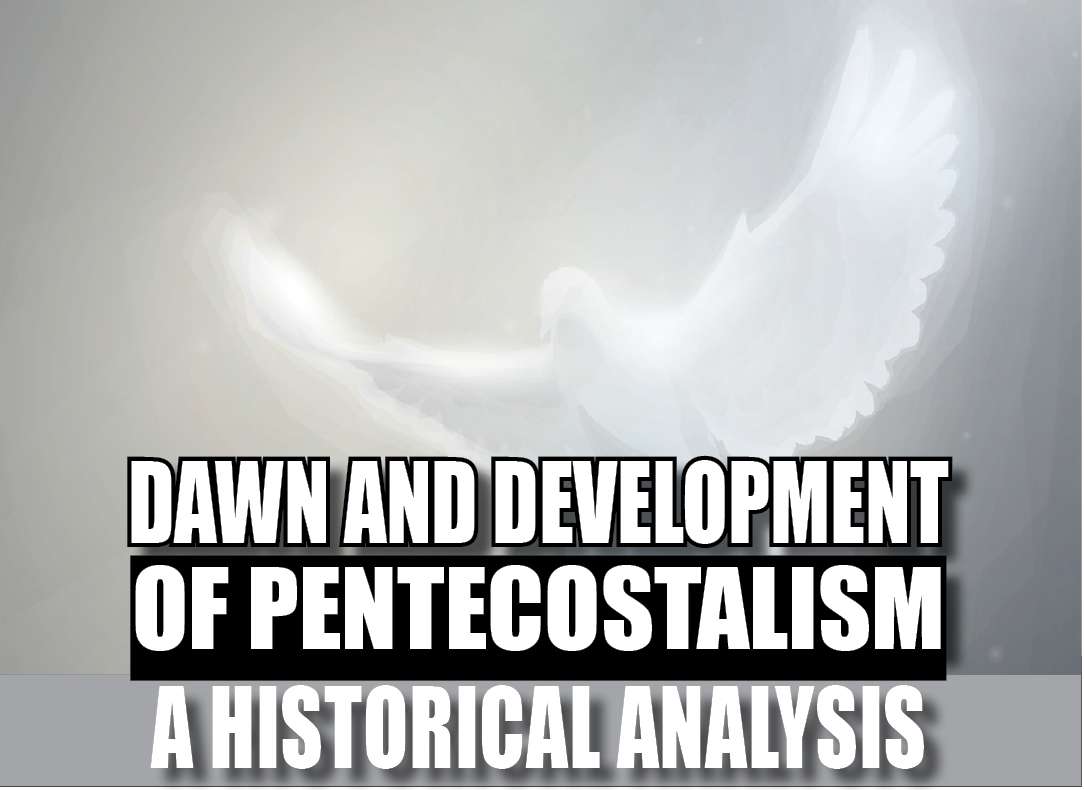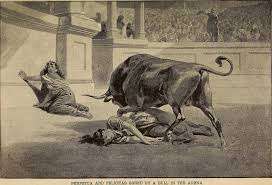
Women Martyrs For Christ: A Historical Flashback of Early Chruch
Dr. Rajeevan M. Thomas
Introduction
The history of martyrs would start whenever and wherever persecutions or oppositions take place. The ratio of martyrs would be based on the density of the challenges of persecution and the response of its victims.
The term martyr is not an exclusive word of religion but applicable to other socio-political arenas of human life. Words like martyr and martyrdom are inseparable to Christians and their history. Christianity is a missionary religion and witness is an inbuilt segment. Martyrdom is the highest form of public witness.
Martyrs can be enlisted into two main categories: living and non-living martyrs. The first group is active in the present times and the second group who went into the pages of history. Similarly, we can further divide this cluster into two groups: men martyrs and women martyrs. But the history of martyrdom is predominantly ascribed to men. Nevertheless, this brief write-up focuses on women martyrs for Christ confined to the early centuries in Roman Empire, the greatest arena of the Christian martyrs. It will decode the role and contributions of women for the enhancement of the ministry/mission in early Church, and also empower the present-day believers to face the challenges of faith and witness in their given context.
Meaning of martyrs
The word martyrdom is derived from a Greek word martur which means witness. According to Mariam Webster Dictionary, a martyr is a person who voluntarily suffers death as a penalty or cost of witnessing to or refusing to forsake a religious faith or a principle. Christian martyr means the true witness of Christ. Any discussion on Christian martyrs usually commences with the famous abrupt exclusive statement of Tertullian, “The more you cut us down, the more we grow; the seed is the blood of Christians.” Later, it was altered as a maxim, “The blood of the martyr is the seed of the Church.”
Our query is: Who is a real martyr? It is defined that, “A martyr is one who holds on to a faith or conviction which one values more than one’s life and, lays down the life when the faith or conviction is threatened.” (GR,1995, ix). According to my opinion, Christian martyrs are the evergreen heroes/heroines and the real divinely endorsed saints of the Church; true disciples of Jesus; sacrificial and patriotic Christians; real lovers and soldiers of Jesus; extremely brave Christians; the sheep in the midst of wolves, wise and visionary Christians who took right choice at right time, victims and victors of persecutions, one who sacrificed their earthly life for Christ, faith stalwarts and so on.
Select History of Christian Lady Martyrs
The history of Christian martyrs, past and present is incomplete and not properly recorded. Sometimes an over emphasis is given to men due to the instigation of traditional patriarchal lineage in its earlier available history. Hence, it is apparent that the task of enumerating the exact numerical data of the martyrs, particularly lady martyrs, is a herculean task.
Apart from the writings of Church Fathers and earlier writers including Eusebius, we hardly have had any serious primary sources to understand the inclusive history of martyrs. The canonization and veneration of such martyrs by the traditional churches like Catholic Church produced some literature. But it demands a re-examination of its historical values. John Fox’s Book on Christian Martyrs-Foxe’s Book of Martyrs is a notable document derived later. The present writer largely depended on it along with another book Martyrs in the History of Christianity (FJB) for the study of this topic. Following are the select names as the representatives of the galaxy of Christian lady martyrs.
1. Symphorosa
Symphorosa was an Italian Christian lady martyr of the second century. She was a widow with seven sons. They were asked to offer sacrifice to the Roman gods which they refused. Hence, they were jailed and offered several promises to allure them to worship pagan gods. Symphorosa refused to yield to these allurements and the Roman authority ordered cruel death penalty. This resulted in her witnessing the brutal punishment of her seven sons were who became martyrs of the Christian faith. Even after undergoing the unbearable agony of losing her seven sons one by one, she was not ready to give up her faith in Jesus. Later, she was hanged to death and thrown into a river with a heavy stone tied around her neck.
Thus, Symphorosa paid a heavy cost for her Christian discipleship and became a heroine of Christian witness.
2. The Martyrdom of Blandina
Blandina was a martyr of the second century. The writing of Eusebius is the main source of information about her. She was a strong Christian devotee who refused to engage in pagan worship systems. As the part of her punishment, she was taken into the Amphitheater. She was a bold lady who resisted all kinds of torturing that was inflicted upon her from morning to evening.
Blandina was hanged to death and exposed to wild animals. But the wild beasts did not attack her, and finally she was killed by a bull. She was martyred during the period of Marcus Aurelius in the year of AD.177.
3. Vibia Perpetua and Felicitas
Perpetua is one of the martyr heroines of the early church. A married Christian woman of twenty-two, suckling a child, she hailed from the city of Thuburobo, Carthage in North Africa.
She was educated and raised in an affluent family. She and her friends embraced Christian faith and was a woman of vision. She even had visions recorded in her diary about her martyrdom. Later, they were arrested and put into jail.
The loving request of the father of Perpetua to forsake her faith in Christ is heart touching: “Daughter, have pity on my grey head have pity on me your father, if I deserve to be called your father, if I have favored you above all your brothers, if I have raised you to reach prime of your life. Do not abandon me to be the reproach of men. Think of your brothers, think of your mother and your aunt, think of your child, who will not be able to live once you are gone. Give up your pride! You will destroy all of us! None of us will ever be able to speak freely again if anything happens to you.” After this pleading, he kissed her hand and tearfully fell at her feet. But she remained persistent in her faith.
He came to her with her little son, during her trial, to induce her to forsake faith in Jesus and said, “perform the sacrifice, have pity on your infant son.” Later, Governor Hilarianus also prevented her from the severe punishments by stating, “Have pity on your father’s grey head; have pity on your infant son. Offer the sacrifice for the welfare of the emperors.”
Amidst these sorrowful lamentations of her father and tempting offers of the Roman authority to renounce her Christian faith, she remained steadfast in her faith even unto her brutal murder along with her friends.
Felicitas was yet another lady Christian martyr, an eight month old pregnant slave who was arrested along with Perpetua. Hence, her trial and execution were postponed. But she and her friends at jail prayed earnestly unto God to have speedy delivery to embrace martyrdom together. Two days before their trial, she gave birth to a child and was mercilessly pushed into the trial and the Court sentenced her to brutal death on the ground of her refusal to forsake Christian faith. Perpetua and Felicitas faced this situation with great joy and holy kissing each other without fear.
Their execution happened ruthlessly, as they were thrown nude into a public arena to a wild bull. The wild bull first crushed down Felicitas and later attacked Perpetua. Both of them comforted each other until their last moments. When wild beast failed to kill Perpetua, the cruel people cried to kill her with swords. Finally, Perpetua was killed with sword by a gladiator on 7th March, AD.203.
Thus, a breast-feeding woman and a new mother were martyred because they boldly witnessed their love for Jesus exceeded their love for their families, including their infant babies.
4. Agnes of Rome and Denisa
Agnes was a beautiful Christian young girl, of noble Roman heritage. She became the youngest Christian martyr at the age of thirteen, during the rule of Emperor Diocletian. Church Fathers like Ambrose, Augustine, Jerome and others consider this young martyr as a bold and noble Christian moral icon. Due to her refusal to give up her Christian faith, she was ordered to be burnt. Tradition says that the orders failed and finally she was stabbed to death. It is reported that the tomb of Agnes was turned into a great pilgrim center with the construction of a big basilica by Constantia, the daughter of Emperor Constantine. She was later venerated as a Saint.
Likewise, Denisa, another teenage girl was martyred for Christ, during the seventh general persecution, under Dacius. She publicly opposed the anti-Christian verdicts. When questioned by the authorities she openly stated that she was a Christian! Later, the Court ordered to put an end to her life. Hence, she was beheaded. Thus, the martyrdom of these two teenage girls showcases their love and steadfastness towards Jesus without counting the cost.
5. Agatha of Sicily
Agatha was a beautiful Christian lady of Sicily who became a martyr during the persecution of the Roman Emperor Decius (AD. 249-51). According to tradition, she was born in AD 231 and became a martyr around 251.
The Quintian, Governor of Sicily, was attracted by her beauty and requested to marry him. But she resisted it several times on the ground of her faith. In order to tame her, he employed Aphrodica, a licentious woman. But she utterly failed to manipulate her character and win her for the Governor. Agatha said that she was a Christian and neglected all the royal offers due to her Christian faith and morality. Later, he tried to take revenge by imprisioning her – she became a martyr after enduring brutal torturing. She is venerated as a virgin martyr in traditional Christian history.
6. Susanna
St. Susanna was yet another virgin martyr of the early church. She was also a beautiful and pious Christian believer. Traditional accounts tell us that she was the niece of Casius, the Bishop of Rome, and also a relative of the Roman Emperor Diocletian. The emperor urged her to marry one of his relatives. But she was not willing to marry this pagan noble. The emperor decided to punish her and asked her to offer sacrifice to Roman gods. She rejected it and stated that, “I offer myself in sacrifice to my Lord.” Finally, she was beheaded by the order of the emperor.
7. Theodora and Cecilia
Theodora was a yet another Christian devotee of Antioch who met with brutal murder at the hands of anti-Christian people in the third century A.D. She was a lovely young lady who refused to offer sacrifices to pagan gods. She awaited punishment. Meanwhile, Didymus, a Christian helped her to escape with his dress. But when Theodora came to know the news of the execution of her helper, she came to request to save his life. But the Judge ordered the execution of both. They were first beheaded and later burned to ashes.
Similarly,Cecelia, another young secret Christian lady from a noble Roman family, who lost her life as well as that os her siblings. She converted her husband and his brother and both suffered martyrdom. Finally, in AD. 222, she was placed nude in a boiling water and later killed with a sword.
8. Crispina of Toura
Crispina was a notable Christian martyr during the period of Roman Emperor Galerius. She was born and brought up in a noble family of Tourain, North Africa in the beginning of the 4th Century. She was a bold and committed Christian believer who loved Jesus more than her husband and their several children. As per the rule of the land, she was asked to offer sacrifice to the pagan gods for the welfare of the emperor and the people. She emphatically responded, “I have never sacrificed and I will not do so.” When she was threatened to forsake her superstitious belief (Christian faith) and bow before the goddesses, she replied that, “I worship my God almighty; I know of no other God besides Him.” when she was not ready to forsake her Christian faith or to pay homage to pagan gods, the Court ordered to disfigure her completely before her death. As a result, her hair was cut and head shaven - to mortify her publicly. She then said, “I should be very happy to lose my head for the sake of God.” Finally, she was beheaded and became a noble martyr on 5th December, 304 AD.
Concluding Reflections
Based on the above brief historical survey on lady martyrs, let me raise few queries and responses related to the role of women in Christian ministry?
i. Do we need a separate history of Christian women martyrs?
ii. What is the nature of the historical narration of martyrs: patriarchic or matriarchal?
iii. Do we face gender discrimination in ministry?
iv. What is the perception of the New Testament and Apostolic period on the role of women in ministry?
v. Why is the position of women eclipsed in ministry in later times?
vi. Why is the history of lady martyrs significant?
As stated above, no history is complete either in its content or interpretation. It is largely dependent upon who wrote history and from what perspective. The earliest Christian writers were products of the ancient Greco-Roman and Jewish world view. Under their treatment, women and their contribution either neglected or largely silenced.
History is basically an interpretation of the past by the present. Hence, a polyphonic reading and re-reading is mandatory to liberate such silenced or sidelined ministers from the traditional misogamist hegemony and give it an actual face, voice and space, so that they enjoy gender equality and justice. We need inclusive histories and not mere exclusive male dominated history. We need ‘his’ and ‘her’ stories (His[her]stories).
Though Christianity declared the gender and social equality through the life and teachings of Jesus and apostles, we can see a gender inequality in Christian ministry even today by keeping a parochial interpretation of select biblical portions like 1Cor. 14:34. Jesus and the apostles never discouraged or excluded women from their public meetings and ministries. They were the greatest champions and liberators of women of that time. We cannot develop a sound theology of marginalization of ladies in Christian ministry from their teachings. The Great Commandments (Matt.22:36-40), Great Commission (Mtt.28:16-20) call, for discipleship of Jesus (Matt.16:24; Lk.9:23), etc., are inclusive and open-ended for men and women. Similarly, the well-known ‘In Christ (En Christo) formula’ of Paul stated in Gal.3:27-28 is widely known as the ‘Magna Carta of Christian liberty’. It is the preamble of Christian gender equality and freedom. It also envisages a healthy complementary and contributory equality and partnership in Christian life and witness. The presence and participation of lot of women with or without names in the ministry of Jesus and apostles in the New Testament books supports the active participation of ladies in ministry during the apostolic times. The history of the persecutions and list of the lady martyrs in the post-apostolic times also shows its continuation. However, the Constantine Era (4thcentury) marked the decline of the position of women in Church ministry. The following factors are contributed towards it:
i. The legalization of Christian religion in Roman Empire,
ii. The rapid growth of Christianity in and out of the empire,
iii. The emergence of heresies and controversies and the Ecumenical Councils,
iv. The shifting centers of worship from houses into mega churches in urban centers,
v. The emergence of apostolic succession and elaborate administrative structures with male leaders,
vi. The transformation of private religion into public religion,
vii. The intruding of royal or political support and leadership into church.
The history of the lady martyrs of the early church shows that there is no gender discrimination in the witness. Ladies are bolder in facing the martyrdoms, proving they are second to none. The above-mentioned teenage girls/virgins, feeding women, carrying women, just married, rich and noble family women, mother of several children and brothers, and similar others faced chronic persecutions, dehumanized brutalities and martyrdom with extra ordinary courage and joy. On the eve their life/faith threatening situations, they have shown courage and gave more priority to their faith than the alluring bright future with their parents, spouse, children, or the material benefits.
When we distinguish martyrs as ladies, its value doubles that of the men on the ground of their traditionally imposed segregations and subordinations. It is their historical sagas of the Christian witness/ ministries of the Church. The history of the women martyrs can be regarded as the Acts of the Women Apostles. History of such heroic faith and witness should be showcased for the empowerment of today’s women in general and believers in particular.
As we live in the 21st century, it is high time to re-think and explore avenues with optimum potentials of ministry beyond gender discriminations, without distorting core biblical parameters, for the meaningful and wholistic ministry/mission to church and society.
The current Christian ministerial ladies who are engaged in the Pentecostal church ministry along with their husband (pastor) should do a self-critical re-examination of their ministerial identity: Are they ‘full-time wife’ of a full-time minister (husband) OR are they a ‘full-time minister’ of the Church? Let us endeavor to become a genuine disciple of Christ which supercedes all disparities. Amen.


